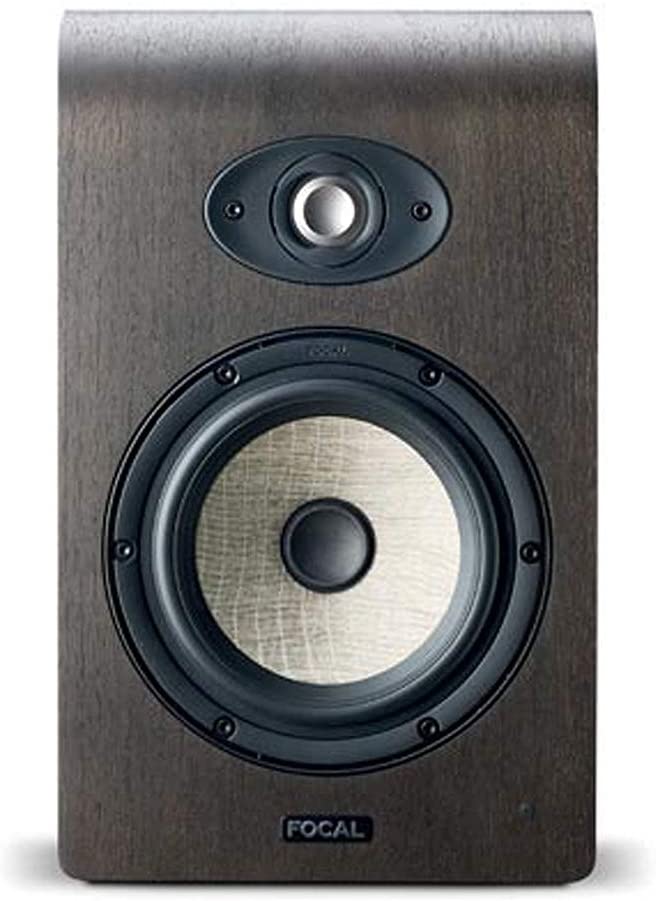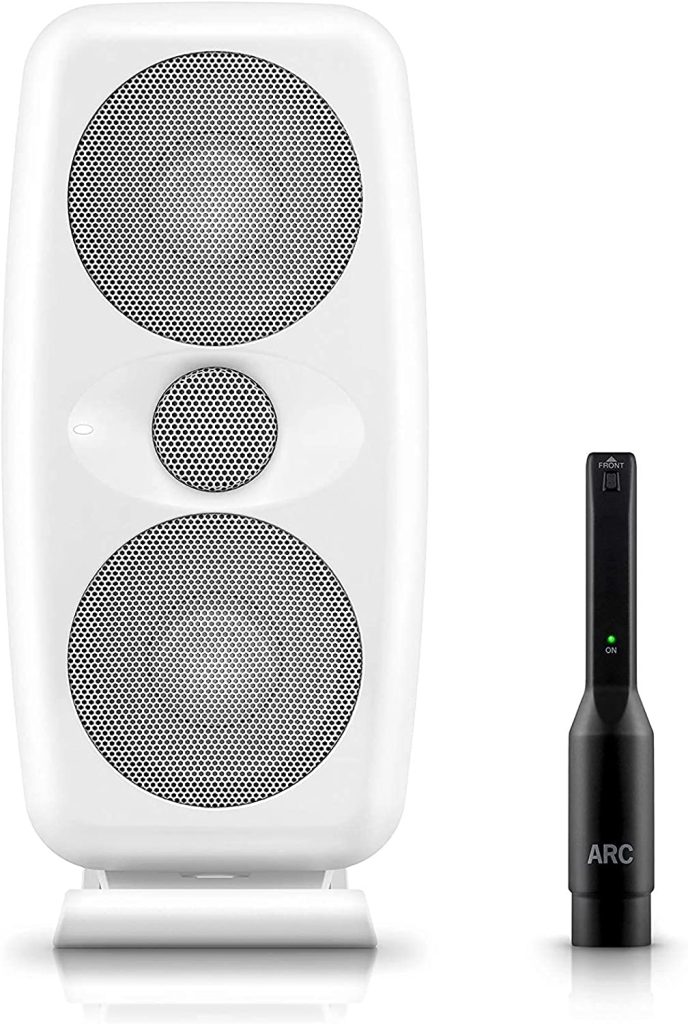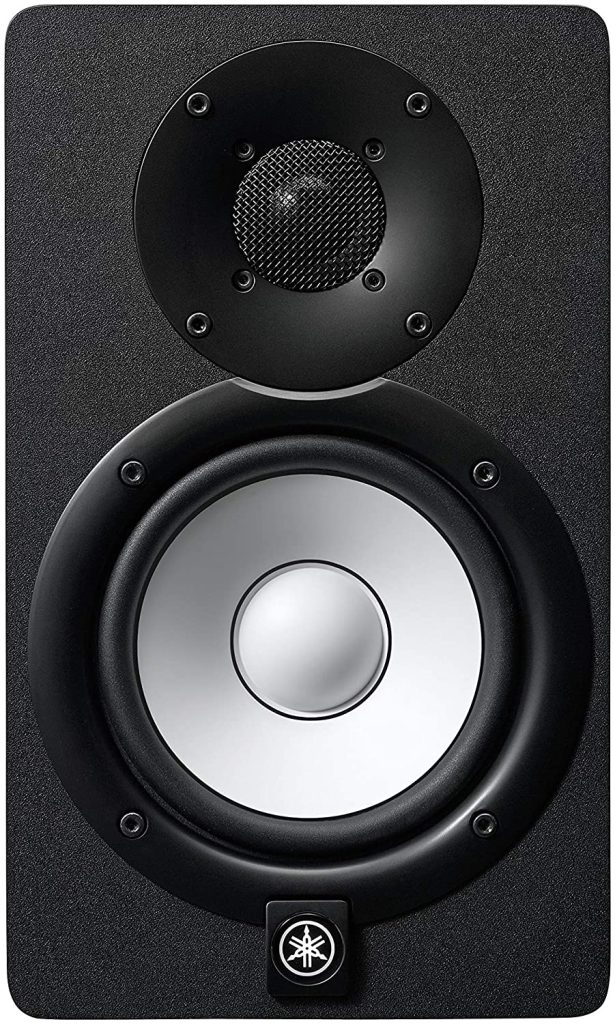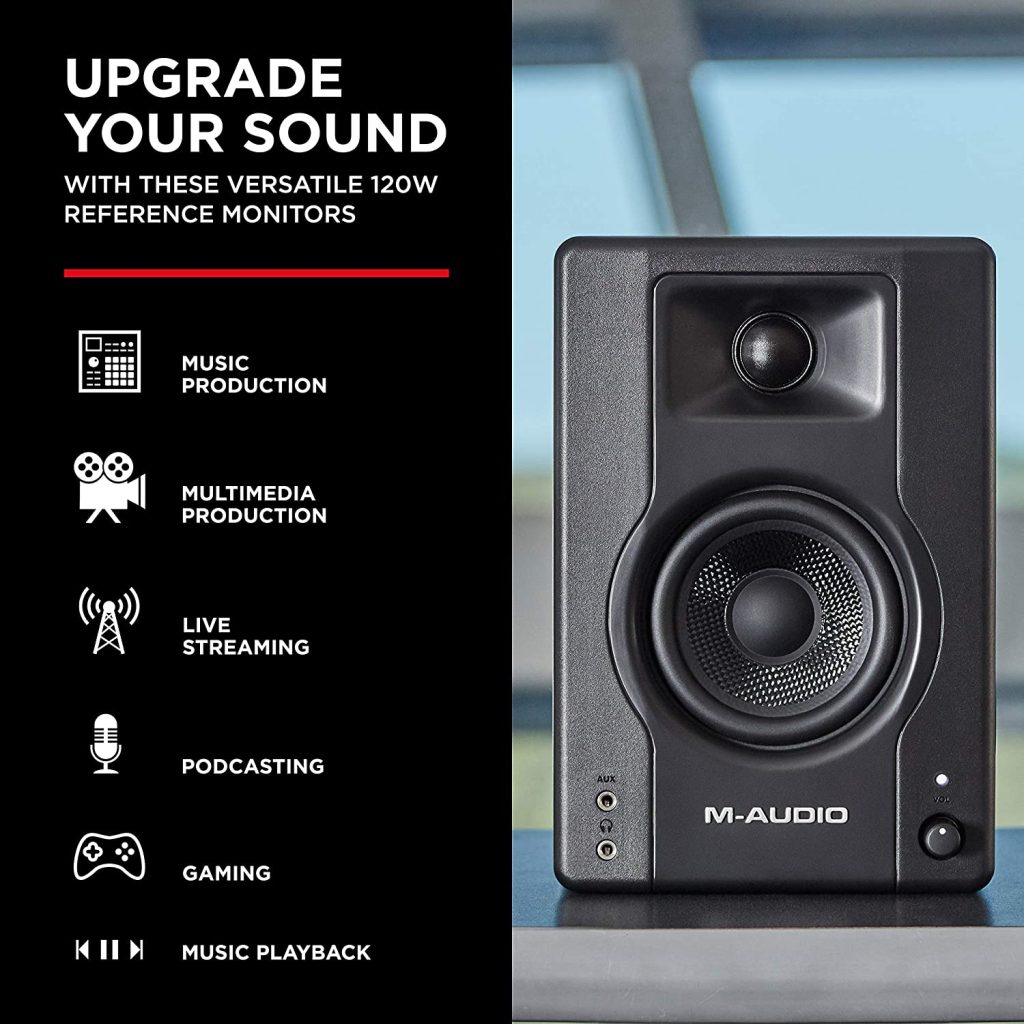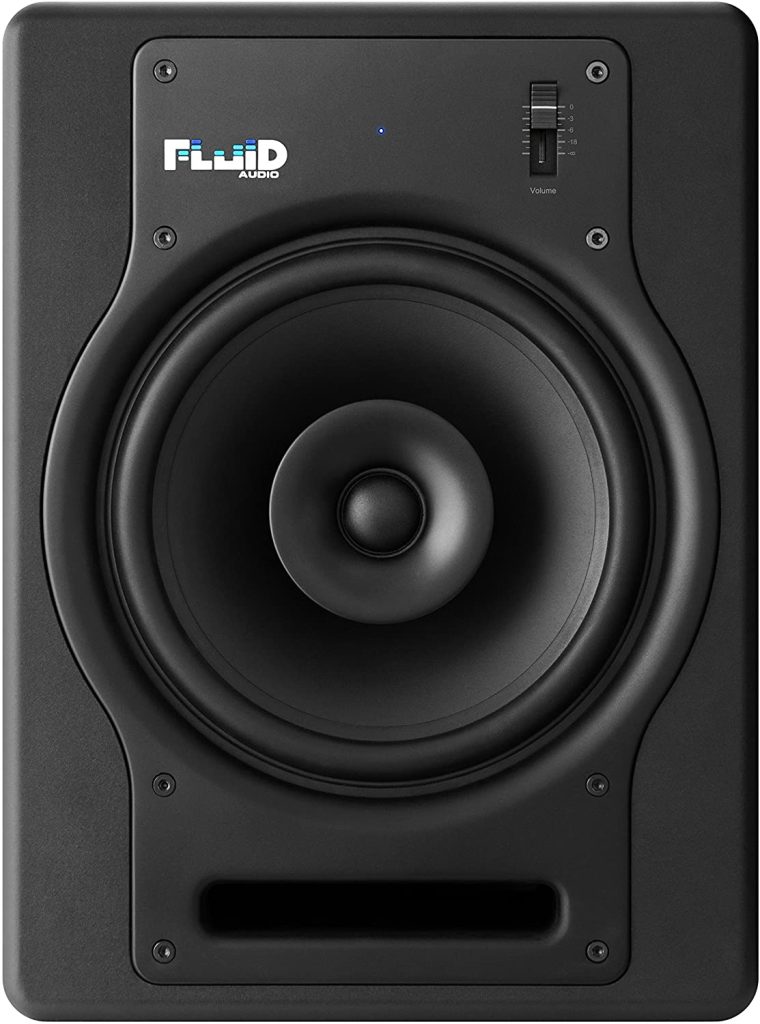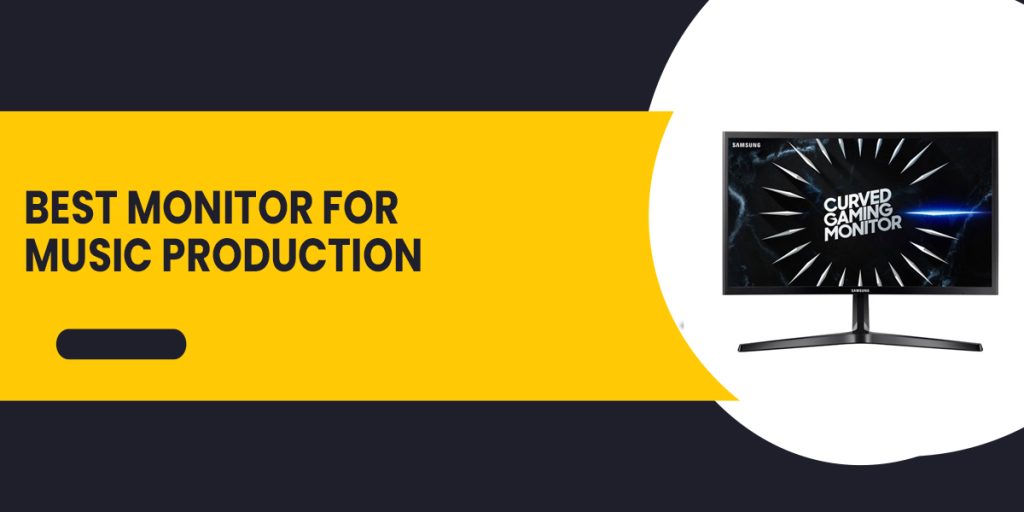
Are you looking for the Best Monitor for Music Production? If so, this article is for you.
A music producer can spend a lot of money on audio equipment, and it is important to know what you are spending your money on. To help you out, we have created this guide to the best monitors for music production.
If you’re a music producer, you would love making music, and would love getting it out to the world. You want to get the best possible results from your studio setup, and you want to spend as little money as possible.
There are plenty of different options when it comes to choosing a monitor for music production. However, the choice of monitor that you get depends on the type of music production you’re doing. The more money you spend on the monitor, the better it is. However, you should only get the best monitor for the type of music production you’re doing.
A good monitor is an essential tool in the recording studio. You can’t make a record without a monitor to hear it. If you’re looking for a new monitor, you’ll want one that has great sound quality and can give you the best possible sound when recording.
You can find a ton of different monitors out there, but most of them will cost you $1000 or more. If you have $1,000 to spend on a monitor, you’re going to want to look for something that has excellent sound quality.
You want your monitor to be able to accurately reproduce the sound that you’re recording. That means it should have high sensitivity, low noise, and flat frequency response. It should also be easy to set up and use. So, how do you know if the monitor you’re looking at is the right one? We have a guide for you.
Contents
How many monitors should I use for music production?
The days of using a single monitor to record and mix your music are over. While it’s true that the majority of professional musicians and producers still record on a single monitor, the market is changing and it’s becoming increasingly common to use multiple monitors at once.
So, how many monitors do you need for music production? Well, if you’re a solo artist, you might be able to get away with a single monitor, but if you’re recording for a band or working as a DJ, you’ll want to invest in more than one. Here’s why. When it comes to music production, having more monitors can be a double-edged sword.
On one hand, more monitors mean more sound channels, which can help you get the best sound out of your recording. On the other hand, though, having too many monitors can make it difficult to hear what’s going on in the mix and make it harder to keep track of your projects.
If you’re looking for the best monitor for music production, you’ve come to the right place! We’ve compiled a list of some of the best monitors on the market today.
Top 9 Best Monitors for music production
1. KRK Rokit RP7 G4 7″ POWERED MONITOR
The KRK Rokit RP7 G4 is a high-quality wireless speaker system that will get your music pumping from your smartphone, laptop, tablet, or even a home stereo system. It comes with a built-in LC display that offers you an overview of the system, including its frequency response, power consumption, and volume level.
The system can be bi-amped, meaning it has a separate amplifier for each of the two speakers. Equipped with a high-quality 2.5″ aramid woofer and a 1″ glass aramid tweeter, the KRK Rokit RP7 can deliver excellent sound quality in a compact package. It features integrated visual EQ settings to help you find the perfect sound for your room.
With its built-in graphic equalizer (EQ) function, the KRK Rokit RP7 G4 can automatically adjust the output of the speaker depending on the volume setting of the mix you’re playing back. It has three EQ settings – Bass, Mid, and Treble – each offering a flat, 6dB/octave response. The bass control can be set to boost or cut frequencies between 30Hz and 80Hz.
This range covers most of the sub-bass frequencies that are often lost when mixing in small spaces. It is ideal for small spaces where portability and ease of use are key. Equipped with a woofer that has an extended frequency response of 40 – 40000 Hz, the KRK Rokit RP5 G4 can reproduce high frequencies that are difficult to achieve with other speakers.
The KRK Rokit RP7 G4 studio monitors are built around a 7″ woofer and 1 x 5″ tweeter, each powered by a bi-amplified 300W RMS amplifier. They offer an impressive frequency response of 45Hz to 20kHz and a power handling of 150W per channel. The RP7 G4 is also designed to handle the rigors of professional use, including 24/7 operation with no power failure.
For maximum sound quality, KRK’s RP7 G4 studio monitors offer a highly efficient crossover network and a custom-designed speaker enclosure with a durable, all-metal grille. The RP7 G4 monitor is also designed to be used in a variety of different environments, from a home studio to a commercial broadcast or recording studio.
Dimensions (H x W x D) of monitor are: 339 x 225 x 284 mm, Weight: 4.6 kg. The KRK Rokit RP7 is a great option for those looking for a high-quality wireless speaker that offers plenty of features and performance at an affordable price.
Pros
- Sound Quality Portability
- Integrated visual EQ settings
- Good range of controls
- Great for small spaces
Cons
- Not ideal for very large rooms.
- Could be more portable.
2. Focal Shape 65 Studio Monitors
The Shape 65 is a very nice-sounding speaker and can be used in any room as long as you don’t mind its size. It’s a mid-range floor stander with a pretty good sound, but there are better options out there.
The most obvious downside is that it’s not a small floor-stander. It’s about the same size as a Sonos Play:1, but that means that you’ll need to have some serious space to place it, and that’s not always possible.
It’s also not the most flexible option, as it can only be placed on a flat surface. If you want to place it in a corner or next to a wall, you’ll need to add a stand.
For this reason, the Shape 65 is best suited for those who want a nice sounding speaker in their bedroom, living room, or home office, but who don’t mind its size.
The frequency response of Shape 65 is great. You can easily hear all the frequencies you’d expect to hear from a speaker with this kind of performance. The 40Hz – 35kHz range offers a lot of flexibility, which makes it great for most music. It’s also quite impressive that the speaker has such a good low end.
The Shape 65 has a smooth mid-range that provides just enough bass and treble without being overpowering. This makes it a great choice for music, as it can be used in almost any room and doesn’t dominate the room as some speakers do.
The Shape 65 is a two-way floor-stander, meaning that it has two drivers that are both facing forward. For this reason, the Shape 65 can be placed in more locations, but it will sound slightly different depending on where you place it. You can place it in the middle of a room, and it will sound great.
On the other hand, if you want to place it next to a wall or corner, you’ll have to make sure that the speakers are facing the same direction. Otherwise, you won’t get the full impact of the speaker.
The drivers in the Shape 65 are about the same size as those in the Sonos Play:1, which makes them smaller than some of the other speakers in this review. The reason for this is that the Shape 65 is designed to be used as a floor-stander, so you don’t need to worry about getting too close to the speaker.
The tweeter in Shape 65 is a slightly unusual type. It’s called an inverted dome tweeter, and it’s made from aluminum and magnesium. The Shape 65 uses a hybrid tweeter, which means that it’s a little bit different from the typical dome-tweeter. The main difference is that it doesn’t use a dome, but rather an inverted dome.
Inverted domes have been used in some very high-end speakers over the past few years, and they sound incredible. They’re also much smaller than normal dome tweeters, which makes them ideal for small spaces.
Pros
- Very good frequency response
- Smooth mid-range
- Good bass and treble
- Great sound for most music
Cons
- Can’t be placed in a corner or next to a wall.
- More floor space required.
3. HEDD Audio Type 20 Studio Monitor
The HEDD Type 20s were designed with the studio musician in mind, so it’s no surprise that they have a very musical, warm, laid-back sound.
They’re also easy to drive – you can get a very satisfying level of volume from them without having to put your ear against the speakers or turning the volume up to maximum. The bass performance is quite tight, but it’s not overpowering and doesn’t take over the mids and highs.
Type 20 has three separate drivers, and each one is different. One is the woofer (the biggest and heaviest), one is the midrange driver (the smallest and lightest), and the third is the tweeter (the smallest and lightest). They all work together, and they all work very well.
The high-frequency response is quite impressive – the Type 20s cover the entire range of frequencies without any obvious dips, and they sound smooth and natural too. The Type 20s are very transparent and open-sounding, with a natural, airy midrange and a smooth top end.
There’s a slight tendency for the highs to sound a little bit recessed at times, but this is an extremely small quibble – the HEDD Audio Type 20s are still among the best studio monitors available.
It’s a good monitor for someone who wants to spend less on studio equipment, and still get a quality sound.
Pros
- The very musical, warm, laid-back sound
- Excellent value for money
- Tight bass performance
- Easy to drive
- Three separate drivers
Cons
- Can be a little recessed in the highs at times
- No remote volume control
- No EQ
4. IK Multimedia iLoud MTM Compact Studio Monitor
IK Multimedia’s iLoud MTM is a fantastic monitor for the money. They’re well-made, easy to set up, and they sound amazing. The D’Appolito configuration in particular is an absolute revelation for the price. If you want a monitor that can be used for both casual listening and critical mixing, these are a great choice.
The ARC calibration system is pretty impressive too – it’s a simple setup that’s easy to use, and it works well. It’s also pretty inexpensive, so it’s a really good option if you don’t have the cash to spend on a $2000+ pair of monitors.
The iLoud MTM can be bought in three different sizes, depending on how much desk space you’ve got. The smallest model (the iLoud MTM S) is great for small rooms, or if you just want a second monitor for casual listening.
The iLoud MTM L is ideal for larger rooms or if you want a second monitor for critical mixing, and the iLoud MTM XL is a fantastic choice for studio environments where you need to have an extra monitor for mastering and mixing. All three models are very easy to set up and use – just plug them in, turn them on, and you’re ready to go.
They’re designed to work with the iLoud Headphones, too, so you can play your music with headphones while monitoring it with the speakers. This is great for when you’re at home, but don’t have an amp. It means that you can take advantage of the sound quality of these speakers without having to carry a separate headphone amp around.
The iLoud MTM’s bass reflex port is a clever design that doesn’t make a huge difference in terms of quality, but it does make a huge difference in terms of usability. Because the port is sealed, it makes it much easier to move around the room, and it also stops the bass from being ‘crowded out’ by the speakers. It’s a nice addition.
Pros
- High-quality speakers
- Great price
- Easy to set up and use
- ARC calibration system
- Sound quality is good for the price
- The bass reflex port is great for usability
Cons
- No integrated headphone jack.
- No integrated power supply.
- A little bit on the small side for some people.
5. Yamaha HS5 Powered Studio Monitor
These speakers are a little more expensive than some of the other entry-level speakers we’ve reviewed, but they’re worth every penny. They’ve got a solid build quality and a pretty good frequency response for the money. They’re also very versatile, with a wide variety of connections so you can hook them up to whatever you want.
With a fairly large number of inputs, they can be used as a stereo pair (as they should be), or they can be split into two mono channels to act as a stereo pair or a pair of mono channels. The speakers are built for mixing and monitoring – not for listening.
They don’t have any graphic EQ or room correction features, so if you’re looking to tweak your mix then you’ll have to do that yourself. The lack of features also means they’re not great for home cinema setups.
What they are good for is producing clean, accurate mixes that will translate perfectly anywhere. The speakers do sound slightly brighter than most other monitors, but they’re not overly bright. The highs are strong and crisp, and the mids are smooth and clear. This makes them ideal for mastering or mixing.
The Yamaha HS5s have a decent amount of bass, which is great for monitoring or mixing. They don’t have a lot of mid-range, which is something that most people don’t notice in practice, but it’s still there. They’re not bad at highs either, although they’re not particularly transparent.
It’s not the best at all, but it’s good enough for the price and the connections are a nice bonus. If you’re looking for a simple, cheap, reliable monitor, these will do the job.
Pros
- Good build quality
- Decent frequency response
- Solid, reliable speakers
- Lots of inputs
Cons
- Not great at high frequencies.
- Not great for home cinema.
6. M-Audio BX3 and BX5
These headphones are designed for the studio, but they’re also perfect for those who just want a pair of headphones that don’t cost a fortune.
The BX3s and BX4s have Kevlar LF drivers that are similar to the ones found in many higher-end headphones. They have a very clean sound with a nice, deep bass, which is ideal for any genre of music.
These headphones were created with live musicians in mind. The compact size and high-quality drivers make these headphones ideal for on-the-go studio sessions.
These headphones come with in-line remote control and mic so you can adjust your volume and switch tracks from anywhere in the room. The BX3 is more expensive than the BX2 and BX5, but if you want something that will work perfectly for you, then this is the one. The only downside is that it doesn’t come with an XLR input, which can be a deal-breaker for some people.
The BX3s and BX4s have a very comfortable fit, and the earcups are made from a soft material that will never scratch your ears or leave them sore. The only downside is that they’re a little heavy, but they’re well worth it considering how much they cost.
If you’re looking for a set of studio headphones, then the BX3 and BX4 are worth a try. They look great, sound great, and are very affordable too.
Pros
- Great sound quality
- Easy to use
- Very comfortable
Cons
- Not XLR input
7. Fluid Audio FX8 Studio Reference Monitor
Fluid Audio’s FX8 speakers are an affordable alternative to its higher-priced flagship models. They’re designed for people who don’t want to spend an arm and a leg on their audio system, but still want to enjoy the benefits of high-quality audio.
The FX8 is a 2-way speaker with 8-inch woofers and a single port design. It has a black finish with silver trim. There are some nice touches like the brushed aluminum grille and a chrome front baffle, but they can be seen as more of a cosmetic addition than anything else.
The most noticeable feature of these speakers is the way that they’ve been designed. Fluid Audio says that it’s been very conscious of creating a speaker that presents a realistic soundstage where you can pinpoint and place each instrument exactly where you want it to be in the mix.
This dual concentric design doing its work ought to achieve that goal and, when listening to some mixes on the FX8s, it does become apparent that there is a nicely detailed soundstage. There is a very good sense of sound location across the stereo spread as well as a decent sense of space back to front.
Mixing a track using the FX8s, we were able to hear instruments as we planned them into position. Clarity of sound is very good across the frequency range and the 8-inch woofers, combined with the port, will give you plenty of bottom-end; although if you think it’s too much for your situation, there’s no bass cut facility to help sort it. The FX8 is reaching the end of its life, recently superseded by the FX2.
This new model includes a new contoured baffle enclosure design, a 30mm silk dome tweeter in a coaxial configuration for improved off-axis response, boundary control EQ switches to enhance mixing in different spaces, plus Class-D amplification which makes for cleaner, more reliable power.
The FX8 is a 2-way speaker with 8-inch woofers and a single port design. It has a black finish with silver trim. There are some nice touches like the brushed aluminum grille and a chrome front baffle, but they can be seen as more of a cosmetic addition than anything else. The most noticeable feature of these speakers is the way that they’ve been designed.
Fluid Audio says that it’s been very conscious of creating a speaker that presents a realistic soundstage where you can pinpoint and place each instrument exactly where you want it to be in the mix. This dual concentric design doing its work ought to achieve that goal and, when listening to some mixes on the FX8s, it does become apparent that there is a nicely detailed soundstage. There is a very good sense of sound location across the stereo spread as well as a decent sense of space back to front.
This new model includes a new contoured baffle enclosure design, a 30mm silk dome tweeter in a coaxial configuration for improved off-axis response, boundary control EQ switches to enhance mixing in different spaces, plus Class-D amplification which makes for cleaner, more reliable power.
Pros
- Good bass response
- Well-defined, detailed soundstage
- Excellent clarity of sound
Cons
- Not particularly suited to very low volume situations.
How to choose the Best Monitor for Music Production – Buying Guide
The best monitor for music production is an inexpensive but high-quality monitor. A monitor is a tool that’s used to playback audio signals. In other words, it’s a speaker. The speakers we were talking about here are called monitors because they are typically placed on a stand next to your studio desk. They’re not built into the desk like most headphones.
You can think of a monitor as the equivalent of your car stereo or TV. If you listen to music through headphones or earbuds, you don’t need a monitor because you can hear the audio directly in your head. But if you want to get the best possible sound out of your studio, you’ll need to set up a monitor.
Similarly, if you’re a musician or producer, you probably know how important it is to get accurate audio monitoring in your studio. For example, you may want to record your vocal track in a separate room from your music recording, so you can hear exactly what you’re producing and hear your vocals in the context of your music.
But if you’re using a cheap, no-name microphone, you might not even be able to hear yourself at all. This can make it difficult to get a good mix, and even worse, you may have trouble hearing what you’re singing in the first place!
Things to Consider While Buying Best Monitor for Music Production
What Type Of Monitor Do did You Want?
If you’re a musician, you may want to consider investing in a monitor that’s designed specifically for music production. This will allow you to make sure that you can produce the best sound quality possible, and that you can do so without any distractions.
The type of monitor you need depends on what type of music you want to produce. Monitors that are designed to be used with a computer. These will usually have an input for a keyboard or a MIDI controller. They may also have a dedicated output for speakers, but again this is not always the case.
Do You Need Monitors With Inputs?
If you plan on recording your music, then you’ll want to make sure that you have a monitor that has an input. This will allow you to hook your instrument up to it, and have it sound great when you playback your recordings.
However, if you don’t plan on recording, then you won’t need input because you can still use your computer monitor to produce the best sound quality possible.
How Many Inputs Do You Need?
As mentioned above, most monitors come with a minimum of one input. However, you may want more than one. For example, if you’re a drummer, you may want to have a microphone input as well as a keyboard input.
If you’re a guitarist, you may want to have a guitar input as well as a microphone input. This is something that’s a personal preference and that you should consider when you’re buying your monitor.
Consider Your Budget
One of the first things that you should consider when you’re looking to buy a monitor is how much money you have to spend. Some people will find a great monitor for less than $100, but others may be willing to pay more for a better-quality monitor.
If you’re on a tight budget, then you may want to consider a monitor that’s under $200. This will allow you to get a great monitor that will still do a lot for you.
Consider The Features You Need
When you’re thinking about buying a monitor, you should also consider what features you need. If you’re a drummer, then you’ll want to make sure that you have a monitor that has a good drum track, a good cymbal track, and a good kick track. If you’re a guitarist, you’ll want to make sure that you have a monitor that has a good guitar track.
However, if you’re not a drummer or a guitarist, then you may want to consider buying a monitor that has a good bass track and a good piano track.
Consider The Monitor You Already Have
If you already have a monitor that you like, then you may want to consider upgrading. This will allow you to get the best possible sound quality out of it.
However, if you don’t have a monitor yet, then you should consider getting a monitor that is specifically designed for music production. This will allow you to get the best possible sound quality, and to be able to produce the best possible sounds on your recordings.
Consider Your Comfort Level
If you’re a musician, you’ll want to make sure that you can comfortably sit and work on your monitor for long periods. This will allow you to produce the best possible sound quality. You also need to make sure that you can comfortably stand up and move around.
Conclusion
Buying a monitor is a big decision. However, it will make or break the sound quality of your music. When you’re looking at monitors, you should consider your budget, the features you need, and your comfort level. If you’re comfortable working on a monitor, then you may want to consider getting a monitor that has the best possible sound quality.
If you’re not comfortable working on a monitor, then you may want to consider buying a monitor that’s specifically designed for music production. What are your thoughts? Have you ever bought a monitor before? “Hope this guide on 9 Best Monitor for Music Production in 2022” helped you in making an informed decision.
Do you have any tips to share? Let us know in the comments below!
- What Monitor Size Is Right for You — 24″, 27″, or 32″? - October 8, 2025
- How to Set Up a Dual Monitor System for Work or Gaming - October 8, 2025
- 10 Common Monitor Mistakes People Make While Buying Online - October 8, 2025
- bet365: the ultimate casino destination for indian players
- win big and have fun with bet365: india\'s best casino site
- bet365: the only casino site you need for indian gaming fun
- join the fun at bet365: india\'s most popular casino site
- discover the best casino site in india: bet365
- play the best casino games and claim huge bonuses at bet365
- get ready to win big at bet365: india\'s premier casino site
- bet365: the online casino site that offers the best rewards
- why bet365 is the best casino site for indian players who love to win
- looking for the best casino site in india? look no further than bet365
- bet365: the casino site that offers the best gaming variety for indian players
- experience the thrill of casino gaming with bet365
- get your casino gaming fix at bet365, india\'s leading site
- join the fun and win big with bet365: india\'s top casino site
- discover the best casino site in india for big jackpots: bet365
- bet365: the casino site that offers the best experience for indian players
- play your favorite casino games at bet365, india\'s most trusted site
- why bet365 is the only casino site you need for indian gaming fun
- bet365: the premier casino site for indian players who love to win
- get in on the action at bet365, india\'s best online casino

